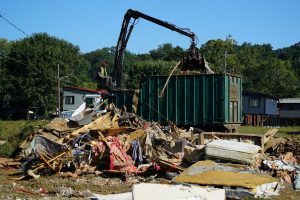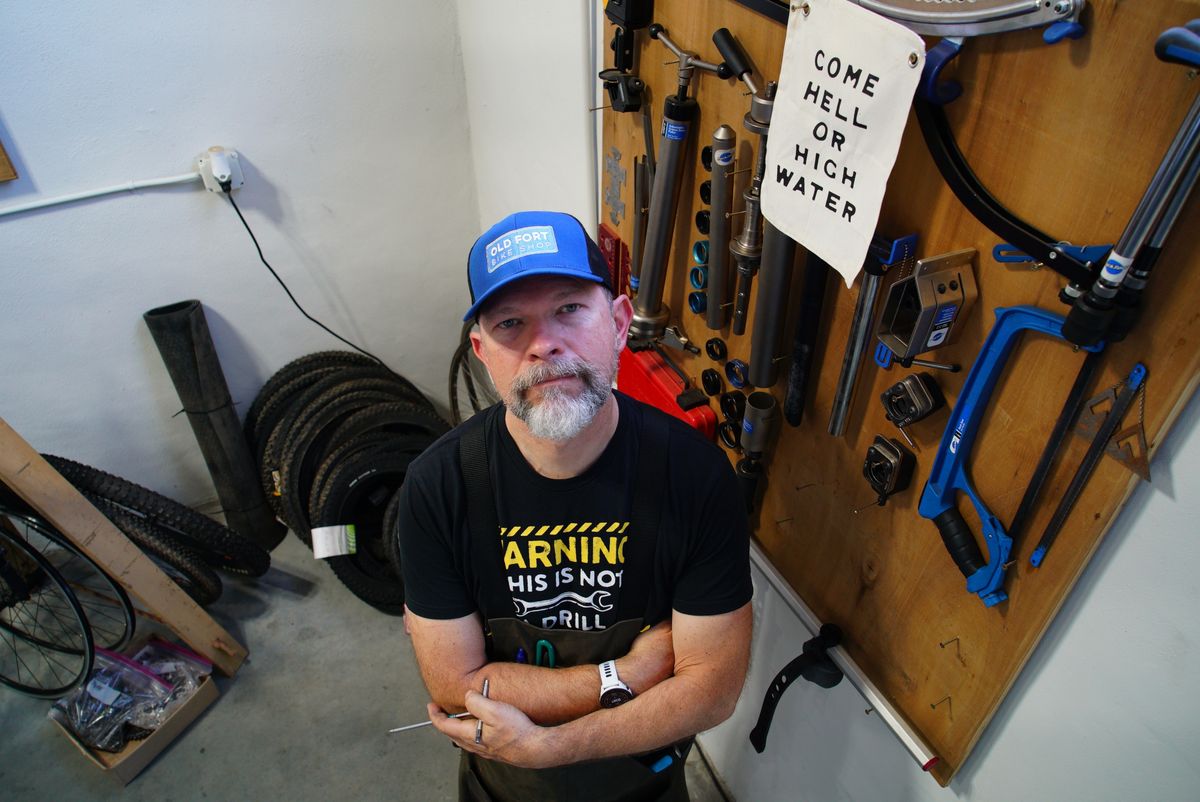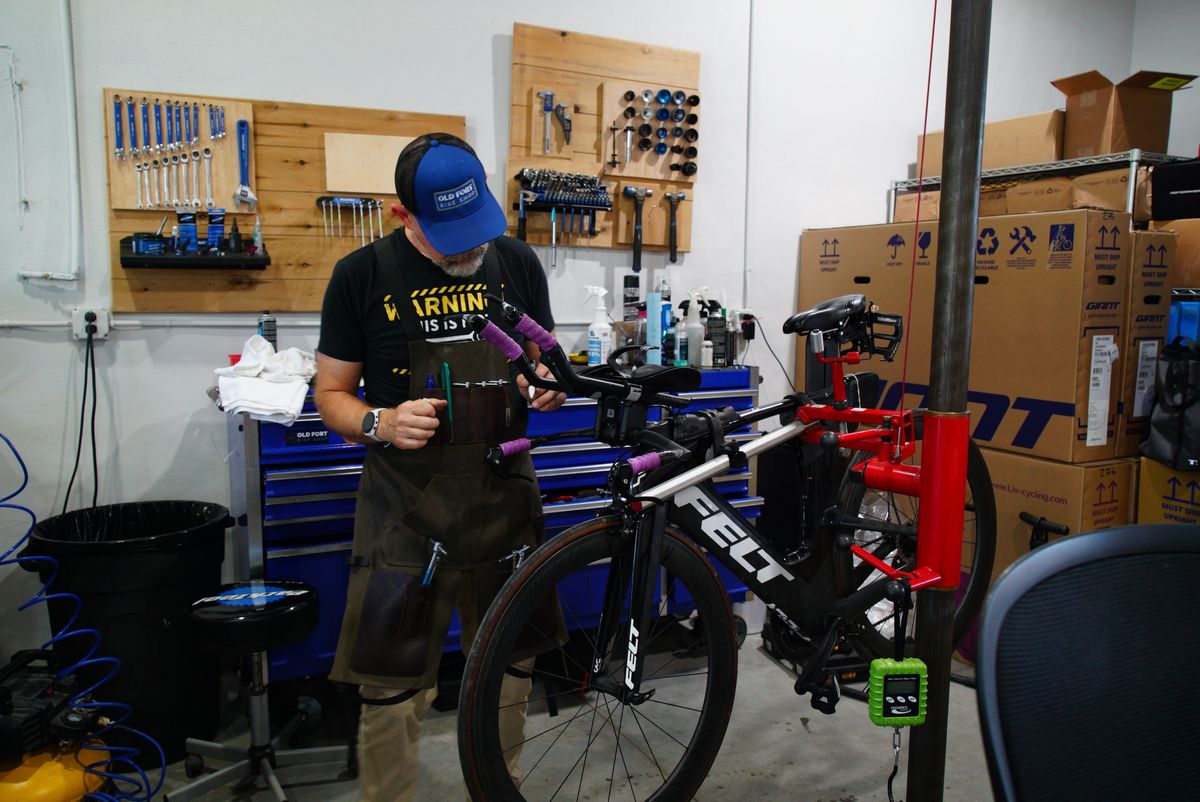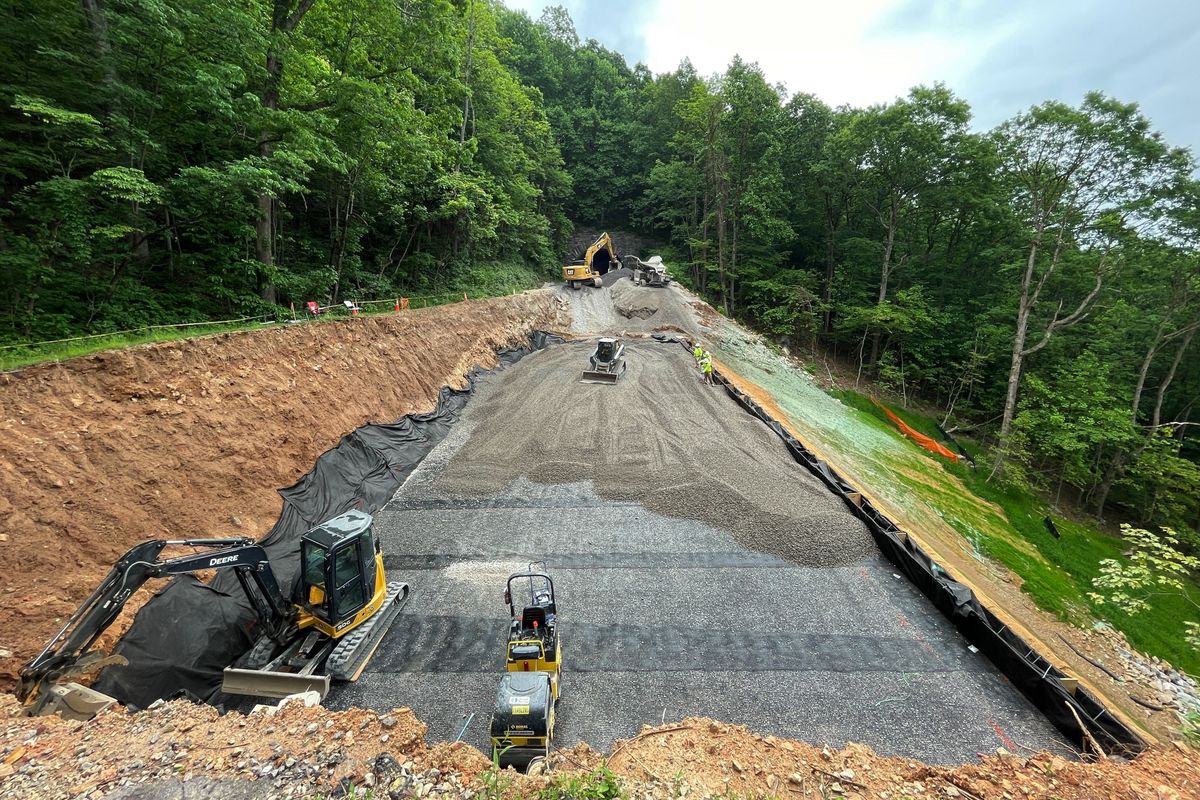OLD FORT, N.C. (AP) — Morning mist is still burning off the surrounding mountains when they appear: Small groups of helmeted riders on one-wheeled, skateboard-like contraptions, navigating the pitched streets, past the 30-foot granite Arrowhead Monument on the town square.
They are among the 400 or so people converging on this Blue Ridge foothills town for FloatLife Fest, which bills itself as “the ORIGINAL and LONGEST RUNNING” gathering dedicated to motorized Onewheel boards. Swelling Old Fort’s normal population by half, the mid-September festival is injecting much needed money and hope into a town still recovering a year after it was inundated by the remnants of Hurricane Helene.
“We should definitely come back again,” says Jess Jones, a 34-year-old marine biologist from Edinburgh, Scotland. “The vibe and the welcome that we got there was really nice.”
That the festival occurred at all is a tribute to the area’s natural beauty, and the resilience of its people.
Signs of progress are mixed with still-visible scars from Helene in this town about 24 miles (39 kilometers) east of Asheville. Most of Old Fort’s shops have reopened, even as workers continue clawing away at a debris pile downtown and some homes remain unlivable.
Like other businesspeople in this tourist-dependent mountain region, bike shop owner Chad Schoenauer has been banking on a strong fall leaf-peeping season to help get him back on track after Helene. But many seem to assume Old Fort is still a wasteland.
“‘Oh, I didn’t know that you were open,’” he says is a typical reaction.
Helene’s floods and landslides interrupt outdoor tourism makeover
When Helene swept through, Old Fort was well on its way to remaking itself as an outdoor destination, especially after furniture manufacturer Ethan Allen laid off 325 workers when it converted its factory there into a distribution center in 2019.
“When the Ethan Allen layoff happened, local leaders started coming together and saying, `How do we use these beautiful natural assets that we have to diversify the manufacturing economy?’” says Kim Effler, president and CEO of the McDowell Chamber of Commerce.
Named for a Revolutionary War-era stockade, the town decided to become a world-class destination for hiking, running, horseback riding and, most notably, mountain biking.
“We have a red clay that makes some of the best trails in the country,” FloatLife founder Justyn Thompson says. “The trails are epic.”
In 2021, the G5 Trail Collective — a program led by the nonprofit Camp Grier outdoors complex — got the U.S. Forest Service to agree to 42 miles (68 kilometers) of new multi-purpose trails. The effort began paying dividends almost immediately.
“For every trail that we were able to open, we saw a new business open up in town,” says Jason McDougald, the camp’s executive director.
The collective had just completed the 21st mile (34th kilometer) of trail when Helene, in Schoenauer’s words, hit “the reset button” by washing away trails and damaging businesses.
When the storm blew through on Sept. 27, 2024, the Catawba River converged with the normally placid Mill Creek, leaving much of downtown under several feet of muddy water.
Schoenauer, who opened his Old Fort Bike Shop in 2021, says it took two days before he could make it to town to assess damage to the business housed in a refurbished 1901 former general store.
“I was numb coming all the way here,” he says. “And as soon as I got off the exit, I started crying.”
The water rose more than 3 feet (1 meter) inside the shop, leaving behind a 10-inch (25-centimeter) layer of reddish-brown mud. The beautiful heart pine floors buckled.
Schoenauer says he suffered about $150,000 in uninsured losses.
At the Foothills Watershed mountain biking complex along the Catawba, the storm took 48 large shade trees and an 18,000-square-foot (1,672-square-meter) track built with banks and jumps.
“We had a septic field, a brand-new constructed septic field for the business that was destroyed,” says Casey McKissick, who spent the last three years developing the bike park. “Never been used; not even turned on yet. And it all went right down the river.”
McKissick says the business didn’t have flood insurance because it was too costly, and the threat of a catastrophic event seemed too remote.
The damage amounted to $150,000. Worse yet was the loss of eight months of business, including last year’s foliage season.
“We lost that really critical fourth quarter of the year, which is a beautiful fall,” McKissick says.
Blue Ridge Parkway closure slows visitors’ return
Gov. Josh Stein recently announced that travelers had spent a record $36.7 billion in the state last year. But that boom eluded the counties worst hit by Helene.
Visitor spending in Buncombe County — home to Asheville — was down nearly 11% last year compared to 2023, according to the state Department of Commerce.
In McDowell, tourist spending dropped nearly 3% in that same period. Effler says this June and July, foot traffic at the county’s largest visitor center was down 50% from last year.
She blames much of that on damage to the Blue Ridge Parkway, which is consistently one of the most-visited of the national parks. About 35 miles (56 kilometers) of the North Carolina route — including long stretches in McDowell County — aren’t slated to reopen until fall 2026.
McDougald says nearly every trail in the Old Fort complex was damaged, with landslides taking out “300-foot sections of trail at a time.”
They’ve managed to reopen about 30 miles (48 kilometers) of trail, but he says about that many miles remain closed.
Schoenauer reopened his shop in December, but traffic was down by about two-thirds this summer.
“My business, revenue-wise, has shifted more to the repair side,” he says. “People trying to still recreate, but use the bike that they have just to keep it going and have some fun.”
The Watershed complex opened in June, but without the planned riverfront gazebo and performance stage. And they’ve moved the bike jumps to higher ground.
“It’s changed our way of looking at the floodplain, for sure,” McKissick says.
___
The Associated Press receives support from the Walton Family Foundation for coverage of water and environmental policy. The AP is solely responsible for all content. For all of AP’s environmental coverage, visit https://apnews.com/hub/climate-and-environment
By ALLEN G. BREED and BRITTANY PETERSON
Associated Press




